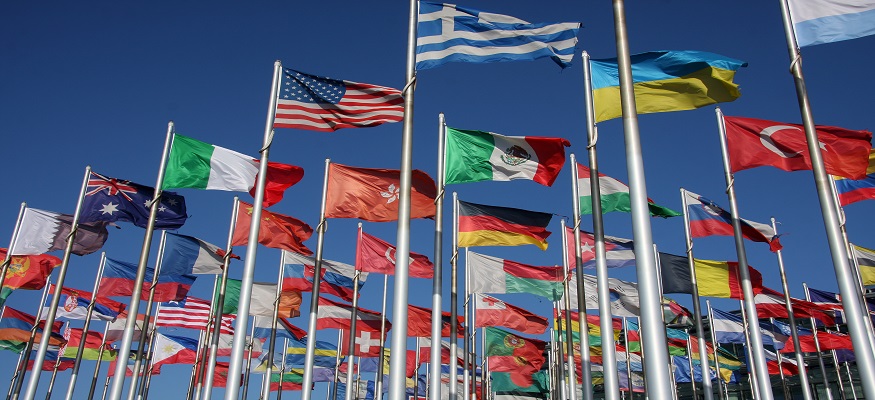Introduction: The Resurgence of Power Politics
For much of the post–Cold War era, international relations scholars debated whether liberalism had triumphed. The spread of democracy, global trade integration, and the rise of multilateral institutions gave rise to hopes of a “rules-based international order.” Yet in recent years, realpolitik—the pursuit of national interest and power over ideals—has returned with force.
From Russia’s invasion of Ukraine to China’s assertive diplomacy and the U.S. pivot toward strategic competition, global politics increasingly reflects a world where power, security, and survival dominate.
This essay explores the theoretical debates around realpolitik, examines contemporary conflicts that highlight its return, and considers the future trajectory of international relations in a fragmented world.
1. Theoretical Foundations: Realism vs. Liberalism
1.1 Realism and Realpolitik
- Realism argues states act in self-interest within an anarchic system.
- Realpolitik: a pragmatic, interest-driven approach, unconstrained by morality.
- Emphasizes power balance, deterrence, and survival.
1.2 Liberalism and the Post–Cold War Optimism
- Liberal theory emphasizes cooperation through institutions, interdependence, and norms.
- Post-1990s: optimism about the UN, WTO, EU, and global governance mechanisms.
- Francis Fukuyama’s “end of history” thesis symbolized liberal triumphalism.
1.3 The Contemporary Clash
- Liberalism remains influential in climate diplomacy, human rights, and trade.
- Yet realpolitik resurfaces where existential threats, great power rivalry, and security dilemmas dominate.
2. Realpolitik in Contemporary Conflicts
Case 1: Russia and Ukraine
- Russia’s invasion (2022) epitomizes realpolitik: territorial ambition, strategic depth, and regime survival.
- Western liberal appeals to norms (“sovereignty, law”) confronted by Russia’s raw power politics.
- NATO expansion and deterrence reflect balance-of-power logic.
Case 2: U.S.-China Strategic Rivalry
- Competition in the Indo-Pacific shows classic realpolitik.
- U.S. strengthens alliances (Quad, AUKUS) to counterbalance China’s growing influence.
- Taiwan represents a flashpoint where interdependence collides with security imperatives.
Case 3: Middle East Multipolar Maneuvering
- Saudi Arabia, Iran, Turkey, and Israel pursue pragmatic partnerships.
- Shifts (e.g., Saudi-Iran rapprochement brokered by China) show realpolitik flexibility.
- Regional politics driven by security interests, not ideological alignments.
Case 4: Africa’s Great Power Contest
- African nations leverage competition between China, U.S., and EU.
- Realpolitik plays out in infrastructure, energy, and digital networks.
- Smaller states act strategically, balancing external powers for national gain.

3. Key Drivers of Realpolitik’s Return
- Erosion of U.S. Unipolarity: Multipolarity creates greater competition.
- Global Crises: COVID-19 showed states prioritizing national interests (e.g., vaccine hoarding).
- Energy and Resources: Scramble for rare earths, oil, and gas deepens competition.
- Technology and Security: AI, 5G, and cybersecurity become arenas of rivalry.
- Weakening Institutions: WTO paralysis, UN deadlock, climate inaction highlight institutional limits.
4. Risks of a Realpolitik World
- Instability: Increased chance of great power wars.
- Fragmentation: Weak global governance undermines cooperation on climate and pandemics.
- Mistrust: Zero-sum logic reduces space for compromise.
- Smaller States Vulnerable: Pragmatic maneuvering may backfire when great powers clash.
5. Opportunities within Realpolitik
- Balance of Power Stability: Deterrence can prevent unilateral dominance.
- Strategic Pragmatism: States may achieve short-term deals (e.g., arms control, energy trade).
- Agency for Middle Powers: Countries like India, Brazil, and Turkey gain bargaining power.
- Innovation in Diplomacy: New coalitions emerge outside rigid blocs.
6. Future Scenarios: Realpolitik in the 21st Century
Scenario 1: Neo-Cold War
The U.S. and China form rival blocs, reminiscent of U.S.-Soviet rivalry, with digital, military, and economic competition defining the order.
Scenario 2: Chaotic Multipolarity
Dozens of power centers compete, alliances shift constantly, and crises erupt unpredictably.
Scenario 3: Hybrid Order
Realpolitik coexists with issue-based liberal cooperation—security rivalry alongside climate and trade collaboration.
Scenario 4: Fragmented Regionalism
World order decentralizes into regional spheres of influence (e.g., Indo-Pacific, Eurasia, Africa), with weak global institutions.
Conclusion: Realpolitik in a Fragmented World
The return of realpolitik does not mean the end of liberalism, but it does signal a world where security, power, and interest increasingly dominate over values and norms. The challenge for the 21st century lies in managing competition without sliding into chaos, and in finding space where pragmatic realpolitik can coexist with the cooperative imperatives of climate change, global health, and digital governance.
In a fragmented world, realpolitik is not merely a throwback—it is the new reality. The future of international relations will depend on whether states wield it responsibly or recklessly.
















































